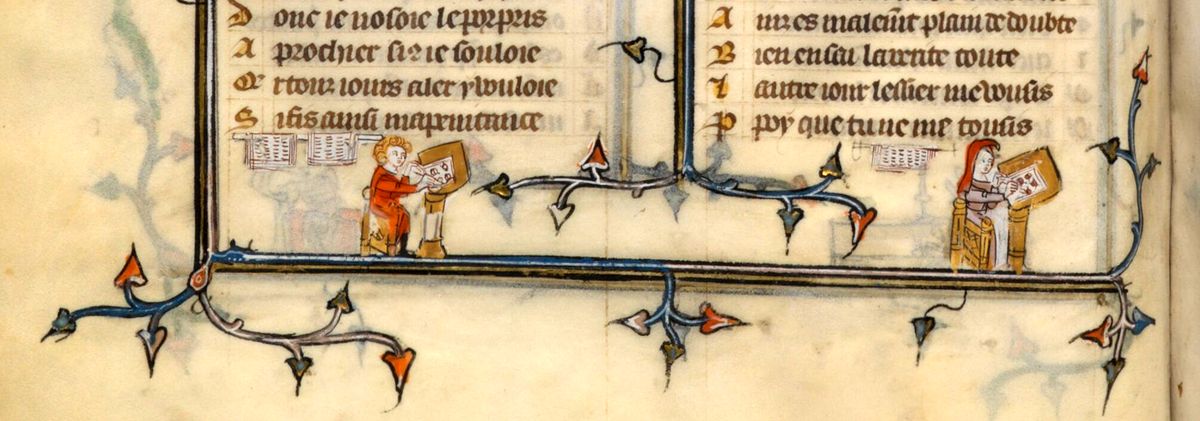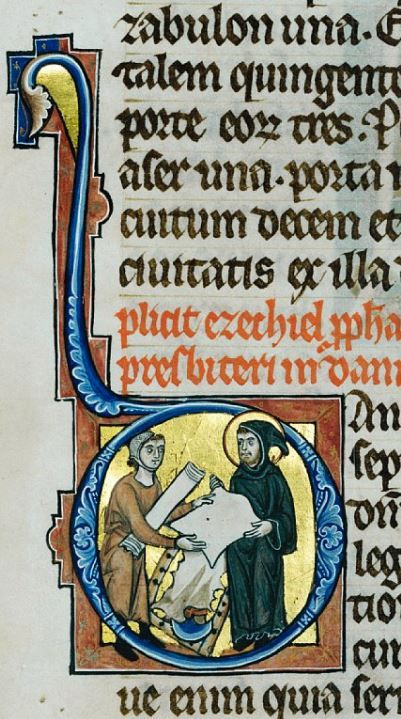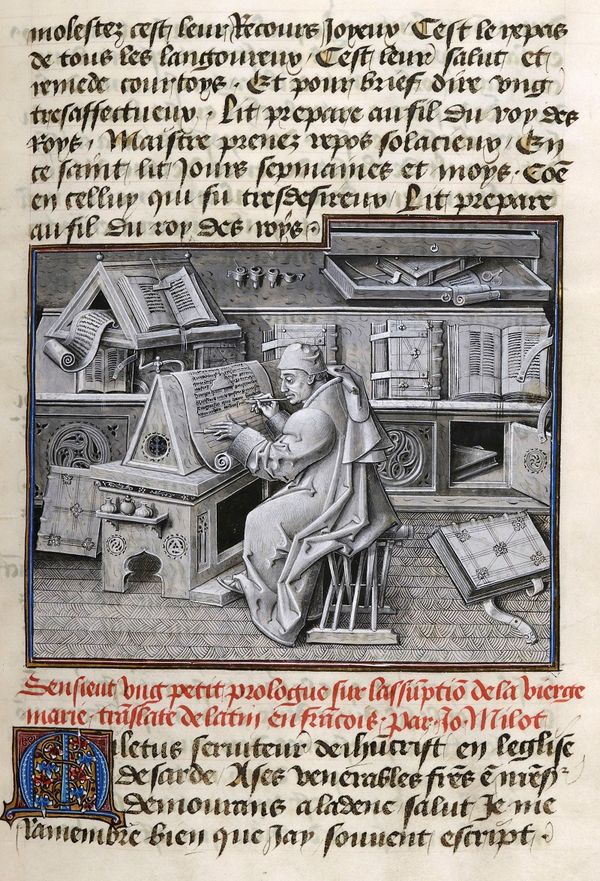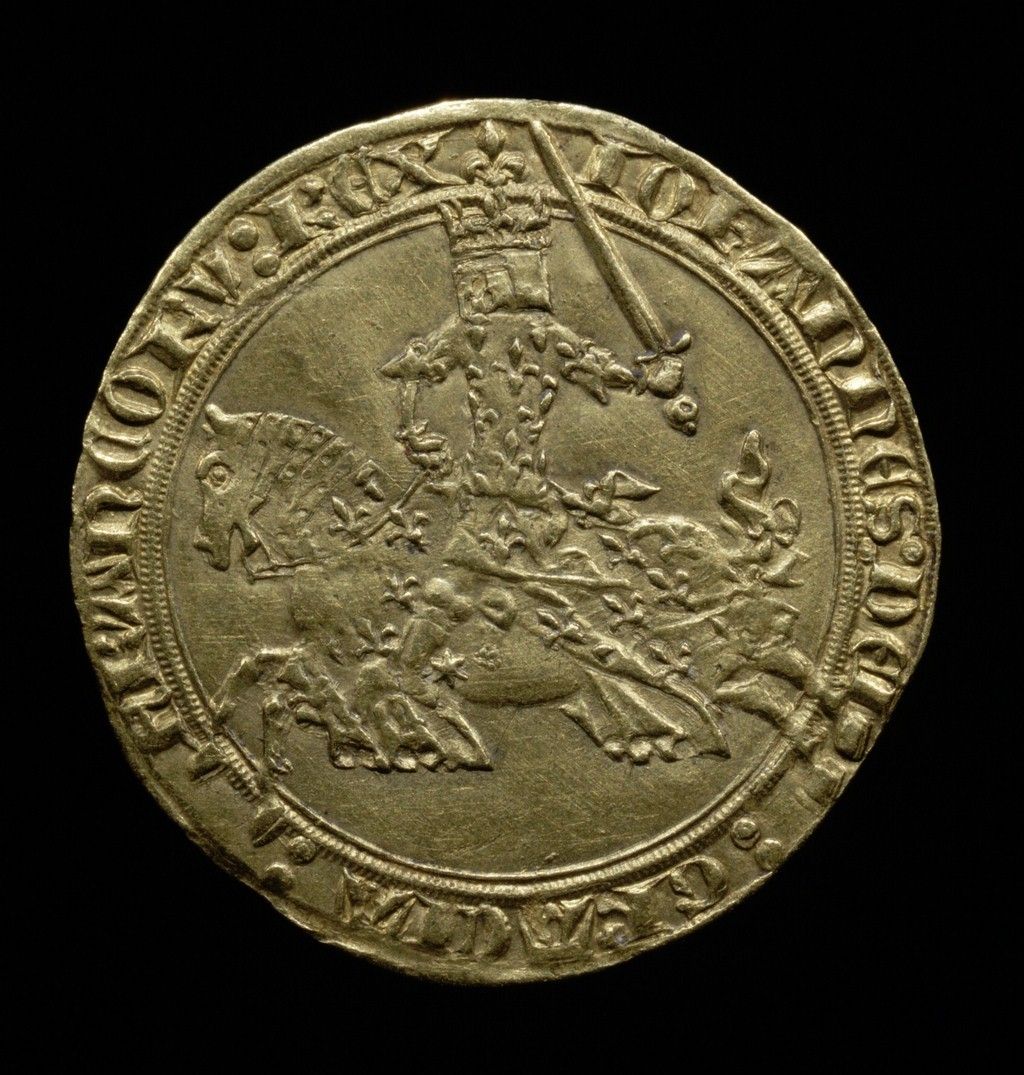The art of reading in the Middle Ages
As a source of knowledge, an object of entertainment or devotion, or even a sign of belonging, books took different forms throughout the Middle Ages, reflecting the places where they were produced and the audiences and practices of written culture. Manuscripts were produced not only in monasteries but also in town workshops, and books were intended not only for religious communities but also for sovereigns and for the nobility, students and bibliophiles to enrich their private collections. Reading was not confined to the written word: people also read by looking at pictures or listening to texts read aloud.
The “The Art of reading in the Middle Ages - ARMA” project explores the role played by reading practices in the Middle Ages in the construction of European identity, through the creation of a European collection of medieval objects and manuscripts. Eight institutions have taken part in the project: the National and University Library of Slovenia, the National Library of the Czech Republic, the Berlin State Library, the Hunt Museum (Ireland), Leiden University Libraries (Netherlands), the Bibliothèque nationale de France, the Europeana Foundation and the Public Library of Bruges (Belgium).
As a result of this collaborative effort, over 23,000 digitised reproductions of medieval manuscripts, incunabula and artefacts covering the period from 500 to 1550 have been selected and placed online on Europeana, with a view to increasing their visibility.
Enriching online medieval collections
As part of this project, digital reproductions of almost 23,000 medieval manuscripts, incunabula and artefacts from the BnF’s collections have been made available, from Gallica, on the Europeana platform.
The addition of these 23,000 documents brings the number of documents relating to the Middle Ages available on Europeana to 47,000:
- 21,000 manuscripts, including 3,800 published as part of the project;
- 600 maps, including 50 new maps published as part of the project;
- 7,500 incunabula and post-incunabula, including 1,700 new documents published as part of the project;
- 17,000 coins corresponding to specific medieval corpuses.
The project has also led to the digitisation of 60 medieval manuscripts.
Discover the series of articles on reading practices in the Middle Ages according to reading media and social categories. [Lire au Moyen-Age] (Reading in the Middle Ages):
- “Les béguines et la littérature au Moyen Âge” (“Beguines and literature in the Middle Ages”)
- “La Librairie royale sous Charles V et Charles VI” (“The Royal Library during the reign of Charles V and Charles VI”)
- All the articles by the BnF and its partners on reading practices in monasteries, towns and royal courts
- The page dedicated to the Middle Ages on the Europeana website
The medieval manuscript
Resources relating to medieval manuscripts have been designed as part of the project:
- See an example of a gallery of 13th-century manuscripts
- How were manuscripts manufactured? See the article
- Explore the manuscript, its structure and its uses, through this series of videos in English produced at the Leiden University Library.
Visit also the collection of King Charles V (reign 1364-1380), which bears witness to the variety of interests of a cultured sovereign and the formation of the first princely libraries. (In French)
Coins in the Middle Ages
17,000 medieval coins from various parts of Europe in the collections of the BnF bear witness to written and numerical information common to all social categories.
For primary school pupils, educational tools have been developed to help them discover the role of coins in trade and in the political life of the period: Download the document
Discover the production processes and significance of medieval coins with our online animation:
Making our collections easier to discover
Educational programmes for all
The collection is also the subject of an editorial promotion initiative aimed at schoolchildren and students.
- Production, commercialisation and use of medieval manuscripts – an educational programme created by the project for teachers
- “Les premiers livres imprimés au Moyen Âge” (“The first books printed in the Middle Ages”) – an educational programme created by the project for teachers and available online in French on Les Essentiels
- All the teaching resources developed by educational sector
- Teaching resources for primary schools
- Teaching resources for secondary schools
- Teaching resources for higher education
Enhancing metadata and data sharing
In addition to this editorial and educational enhancement, semantic enrichment and the implementation of the IIIF protocol facilitate the discovery and consultation of documents.
The semantic enrichment of the descriptive records was carried out in consultation with the partners to facilitate access and visibility in search engines.
More information on the ARMA project data sets (in French)
The European project “ARMA – The Art of Reading in the Middle Ages” is co-financed by the European Union’s Connecting Europe Facility programme, grant agreement INEA/CEF/ICT/A2019/2072436 (October 2020 – July 2022).






